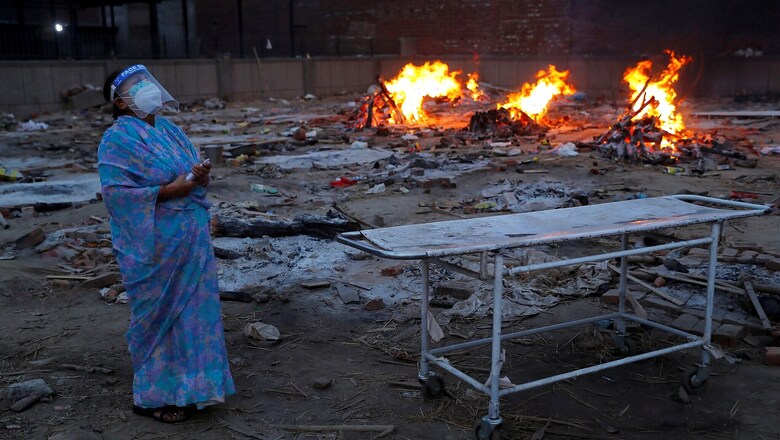
views
A possible third wave of coronavirus infection can hit its peak between October-November if Covid-appropriate behaviour is not followed, but it may see half the daily cases recorded during the second surge, said a scientist of a government panel tasked with modelling of COVID-19 cases.
However, Covid infection can spread faster during the third wave if any new virulent variant of SARS-CoV-2 emerges, said Manindra Agarwal who is working with the Sutra Model– the mathematical projection of the COVID-19 trajectory.
The panel was formed by the Department of Science and Technology last year to forecast the surge of coronavirus cases using mathematical models.
Besides Agarwal, who is a scientist with IIT-Kanpur, the panel also has M Vidyasagar, another scientist with IIT-Hyderabad, and Lt. Gen Madhuri Kanitkar, Deputy Chief (Medical) of Integrated Defence Staff, as members. The panel had earlier received flak for not predicting the ferocity of the second wave of COVID-19 in the country.
About the predictions for the third wave, Agarwal said the loss of immunity, effects of vaccination and the possibility of a more virulent variant have been factored in this time, which was not done while modelling the second wave.
He said a detailed report will be published soon.
“We have created three scenarios. One is optimistic, where we assume that life goes back to normal by August and there is no new mutant. Another is intermediate wherein we assume that vaccination is 20 per cent less effective in addition to optimistic scenario assumptions.
“The final one is pessimistic with assumptions different from the intermediate one: a new 25 per cent more infectious mutant spreads in August (it is not Delta plus, which is not more infectious than Delta variant),” Agarwal said in a series of tweets.
According to a graph shared by Agarwal, the second wave is likely to plateau by mid-August and a possible third wave could reach its peak between October and November.
In the pessimistic scenario, the third wave could see daily COVID-19 cases rise up between 1,50,000 and 2,00,000 in the country, the scientist noted.
The figure is less than half of what was recorded when the deadly second wave had hit its peak in the first half of May, flooding hospitals with patients and claiming thousands of lives daily.
On May 7, India had recorded 4,14,188 COVID-19 cases, the highest during the second wave.
If a new mutant emerges, the third wave could spread rapidly, but it will be half of what the second wave was. Delta variant is infecting people who contracted a different variant earlier. So this has been taken into consideration, Agarwal said.
He said as vaccination progresses, the possibility of a third or fourth wave will be less. In an optimistic scenario, daily cases could be in the range of 50,000 to 1,00,000. In an intermediate scenario, the cases could be in the range of 50,000 to 1,00,000, but more than the optimistic scenario, the scientist noted.
Another panel member, M Vidyasagar, said hospitalisation could be less during the third wave.
He cited the example of the UK where in January more than 60,000 cases were reported with daily deaths touching 1,200. However, during the fourth wave, the number dropped to 21,000 cases and just 14 deaths.
“Vaccination played a major role in bringing down the cases that needed hospitalisation in the UK. This has been factored in while coming out with the three scenarios,” Vidyasagar told PTI.
The government has been emphasising on vaccination as the fear of the third wave looms. Agarwal also explained the reasons behind the delay in coming out with an analysis for the third wave.
“It took us a while to do the analysis for three reasons. First, loss of immunity in the recovered population. Second, vaccination induced immunity. Each of these two need to be estimated for the future.
“And third, how to incorporate these two factors in the Sutra model. Fortunately, it turned out that both can be incorporated by suitably changing contact rate and reach parameters… The first two factors required detailed analysis,” he tweeted.
Contact rate is how fast the infection spreads and reach parameter is the percentage of the population the pandemic is active in. Agarwal added that his team went through studies done in the past on loss of immunity while making the projections.
“Similarly, we also looked at the projected vaccination rate over the next few months, including the effects of vaccine-hesitancy, and arrived at month-wise estimates for vaccination,” he said.
Read all the Latest News, Breaking News and Coronavirus News here.




















Comments
0 comment